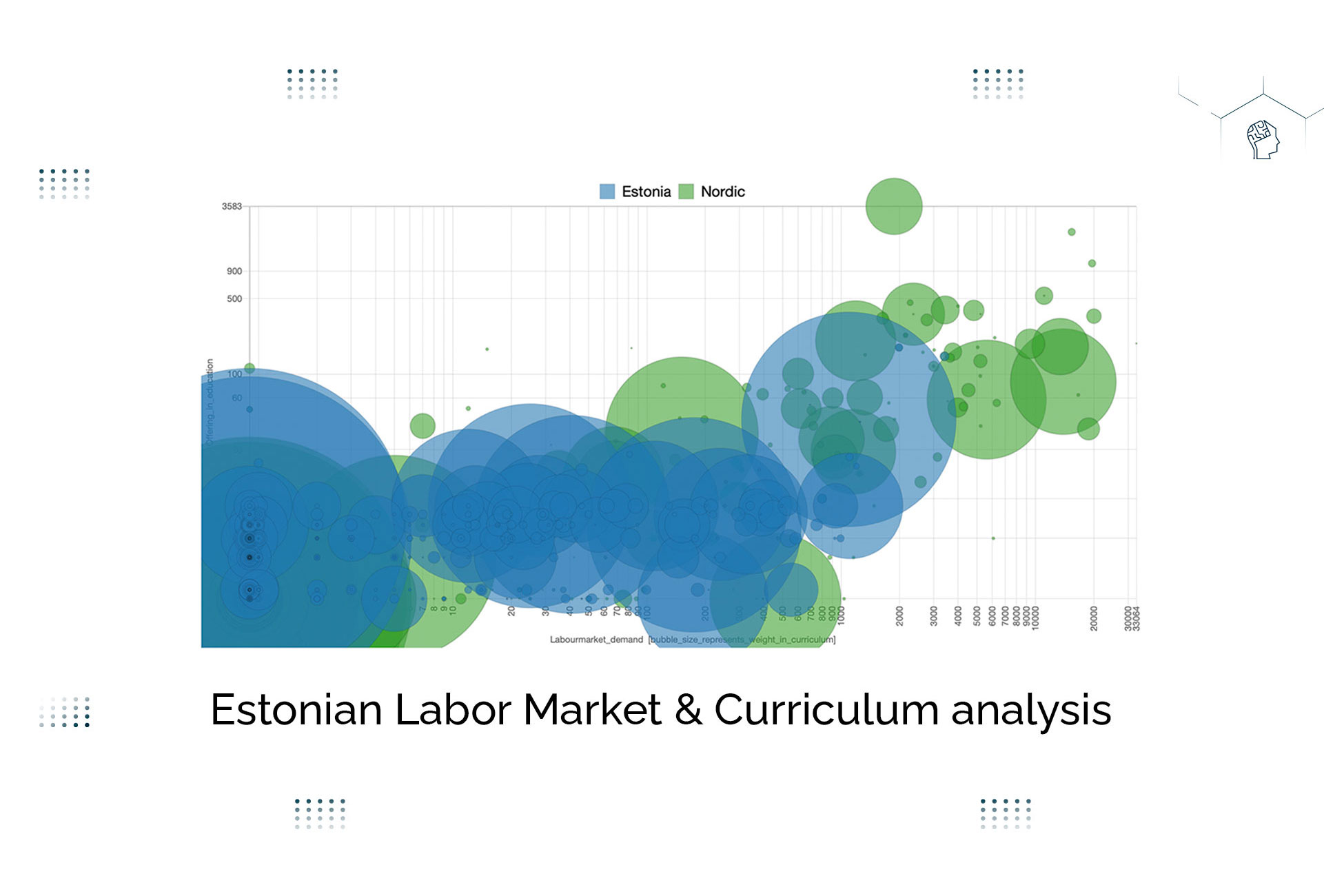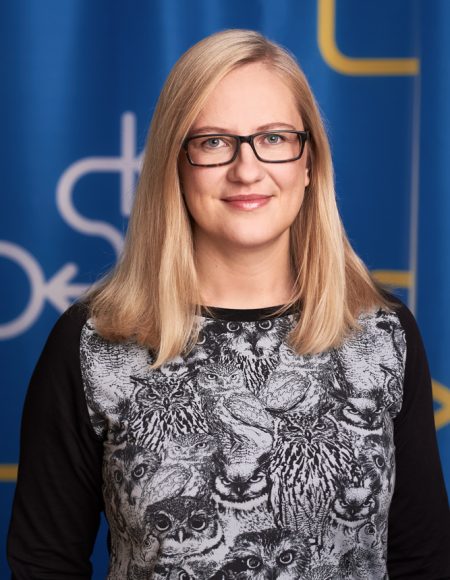There are challenges in designing a labor-market-relevant curriculum. One of the biggest issues is to keep the curriculum up-to-date and to make sure it uses the same vocabulary as the employers do. This challenge has been studied quite a little. Almost all of the curriculums are written in an academic language. Usually, curriculum and course descriptions don’t describe too well the skills that students can gain and present when seeking a job, especially through internet job portals (digital platforms). For the Estonian Qualifications Authority, Headai combined Cognitive AI, Big Data, and Natural Language Processing to build a real-time understanding of skills, competencies, knowledge, and abilities that employers are looking for, as well as analyzing the curriculum data from skills point of view. As a result, we could simulate the skills offering and demand to see the matching and mismatching areas. For more information about Headai’s AI, visit our Science page.
Headai has positioned itself in the very centre of key discussions of future society: what skills are needed, how should they be provided, how can AI be used in monitoring the skills need? The collaboration between Estonian Qualification Authority and HeadAI was prolific and pleasant, seasoned with perfect amount of vision, knowledge, action and humour.
–Ave Ungro, OSKA Program Coordinator, Estonian Qualifications Authority
During 2020, OSKA and Headai worked together on a project to see how much additional value an AI-enabled tool could offer in detecting and analyzing the skills gap between labor market demand and chosen Estonian educational curriculums. First, Headai machine-read and analyzed Estonian job ads (10 876 pieces) and specific curriculum data (6 different vocational and university curriculums in total) on mechatronics. The results were visualized into skills maps which enabled understanding what are the skills that are needed now and in the near future but also, how the curriculum data matches the demand. OSKA and Headai teams kept multiple virtual workshops to analyze and discuss the founding. The results based on Big Data were iterated with the help of human work (both OSKE and Headai). AI teaching was focused on removing noise words and adding in specific curriculum-related words.
From technological perspective, Estonia and Finland have different linguistic challenges. We use Natural Language Processing (NLP) to refine the textual data. Big data is parsed, made interoperabe, and simulated with AI methods to help the experts to make the final iterpretations. AI is a tool but not replacing people. It can be used to speed up the process, and to create an overall picture of the dynamics of the labor market and education based on very large amounts of data.
– Eero Hammais, Communications Manager of Headai
It became clear that AI can bring a significant added value and positive impact in studying the dynamics of the labor market and education. It enables a data-driven approach that can significantly speed up the analysis. The routines of analysis work are powered by AI but the fine-tuning, and ultimately the interpretation, is done by humans. At the end of the cooperation, Headai provided Kutsekoda a broad report including tens of bar charts, bubble charts, and skills maps to illustrate the skill matches and mismatches.
Harri Ketamo giving his keynote at SA Kutsekoda webinar in September 2020.


